Description
Lamborghini Huracan EVO Spyder Rent in Dubai
The Lamborghini Huracán has never been about top speed, and rarely have lap times been key to its mission. This is a car about theater. It’s emotional and maybe overwrought, with a vivid voice that projects way back to the cheap seats. It’s a diva with undeniable talent, even if sometimes it’s tough to figure out what to do with that talent. And, with the 2020 Huracán Evo coupe and Spyder, all that drama has been amplified.
With the introduction of Lamborghini’s Urus SUV, the Huracán’s place in the lineup shifts a bit. It’s no longer the company’s biggest seller, nor is it the entry-level Lambo. The Evo update slightly refocuses the Huracán’s character with an increased emphasis on sensory overload. All 2020 model-year Huracáns will be Evos, though there’s always a chance some grander variant will appear if the company decides to goose up interest in the car. Toward that end, all the substance of the outgoing Performante model, and then some, is now part of the Evo. So, as with the previous car, the exhaust outlets for the Evo’s 5.2-liter V-10 are centered high on the tail for efficient flow and maximum aural satisfaction. Power is the same as in the Performante at 631 horsepower at 8000 rpm. The peak torque of 442 lb-ft still arrives at a frenetic 6500 rpm, and the engine’s redline is at a nosebleed 8500 revs. Shared with the Audi R8, this is a purebred supercar engine from the bottom of its dry sump to the top of its aluminum cylinder heads. Supporting that engine is a seven-speed dual-clutch automatic transmission and an all-wheel-drive system with a limited-slip rear differential.
A revised interior features an 8.4-inch touchscreen that replaces the bounty of buttons that were once in the center console. If a touchscreen is the tipping point for your Lamborghini Huracan EVO Spyder Rent in Dubai, you probably shouldn’t be buying a Huracán. All the Evo Spyders we drove in Laguna Beach, California, weigh roughly 3750 pounds, which is about 250 pounds more than the coupe. At $293,195 to start, it also costs about $25K more than the hardtop. This car looks spectacular with the top down and merely awesome with the top up. And the top itself works quickly with single button operation. The Evo gets a new front bumper design, and the tail has been revised, but only the most committed Lambo lovers will instantly recognize the Evo as a new model.
Lamborghini Huracan EVO Spyder Rent in Dubai boasts about its Lamborghini Dinamica Veicolo Integrata (LDVI) system that funnels all sorts of information through a central processor to optimize the chassis’ performance for any situation, such as adjusting the rear-wheel steering to work with the brake-based torque vectoring and the adaptive dampers to maximize the car’s nimbleness. In fact, Lambo claims that, thanks to various sensors reporting steering, braking, acceleration, gear selection, and maybe even the driver’s shirt size, LDVI can actually anticipate what’s coming up in any situation. Limited exposure with this updated technology makes any evaluation tentative, but it did seem to work pretty well in practice.
The most frustrating part of all Huracáns is that most human beings don’t fit very well into the cockpit. If you’re Valentino Balboni, maybe you fit perfectly. But six-footers have to scrunch up their legs even when driving, and the range of seat adjustments is limited by the bulkhead immediately behind the seats. Top up, the Huracán Evo is not easy for some to get in and out of. Top down, it’s a matter of lowering one’s self aboard. So, as a general rule, keep the top down. On days with overcast skies, drive your Urus.
But the discomfort virtually vanishes the moment the red start button is pushed and the V-10 screams to life. At idle, it trills with menace. Blip the throttle, and it growls up into an aria of power and promise. And all that is before hitting the upshift paddle and putting the car into gear. With the Anima drive-mode selector in the default Strada setting, the Huracán Evo is louder than most cars and sings with a voice that’s clean and pure. It takes no talent to mash the throttle, and the reward is the sense that the meaty Pirelli P Zero tires— sized 245/30R-20s in front, 305/30R-20s in back—are clawing through the pavement and down into the Earth’s mantle. But Strada is the Hallmark Channel of the Evo’s settings. The real fun comes when in the Sport and Corsa modes.
Sport is designed to generate a playful quality. The exhaust gets louder, and prominent crackles and pops are added to its voice. It’s as if artillery barrages are rising up and over the top of the car. Toggle Corsa, and the shifts become sledgehammer-quality shoves. The exhaust doesn’t sound much different than it does in Sport, but the dampers tighten up, the steering becomes heavier, and the tail tends to tuck in through corners instead of drifting out. The Evo doesn’t suddenly transform into a track hog like the Ferrari 488 Pista in this setting, but playfulness is not part of the Corsa character. This is the mode for serious action.
At speed it’s easy to forget that your legs are cramping up from the driving position, and you don’t mind that the learning curve to comprehend all the touchscreen controls extends out beyond your actuarially projected lifetime. Visibility is great, the steering is laser precise, and the carbon-ceramic disc brakes, at least on the street, feel as if they could stop the universe from expanding. There’s no way to test the limits of the car’s chassis on public roads, which was partially why our first experience with the Evo coupe was on the 3.5-mile Formula 1 circuit in Bahrain.
Last year, using launch control in Corsa mode at the test track, a Huracán Performante exploded to 60 mph in just 2.3 seconds and consumed the quarter-mile in a mere 10.2 seconds at 136 mph. Expect much of the same from the Evo coupe and perhaps a touch less from the heavier Spyder. Still, that’s acceleration about which to write poetry and start religions. A day and a half are only enough time to get an inkling of the Huracán Evo’s performance. But that inkling itself is ludicrously entertaining. Lamborghini, for the first time in its history, is producing a vehicle built for everyday chores and commuting. That’s the Urus. The Huracán Evo Spyder is the complete opposite, and all the better for it.





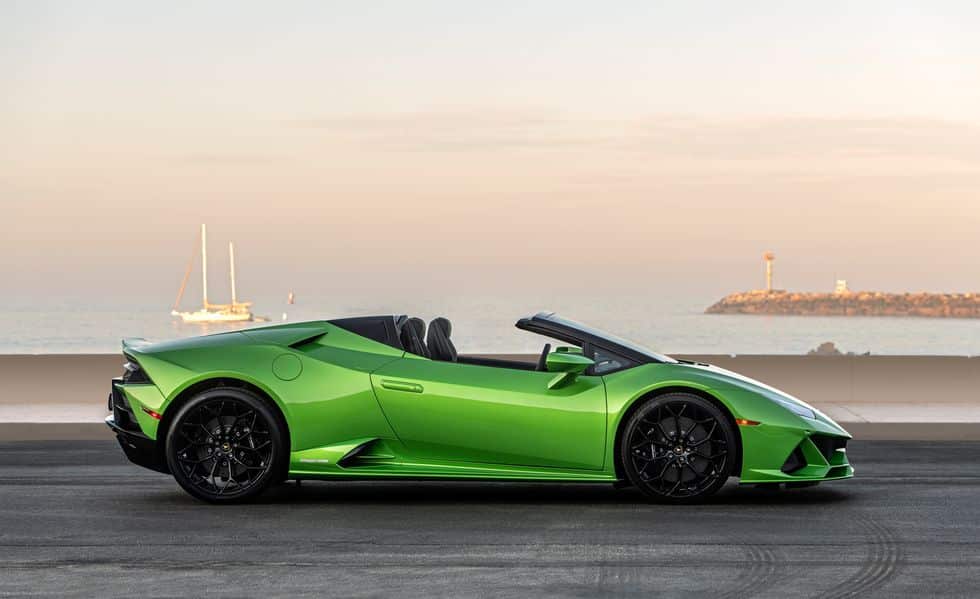
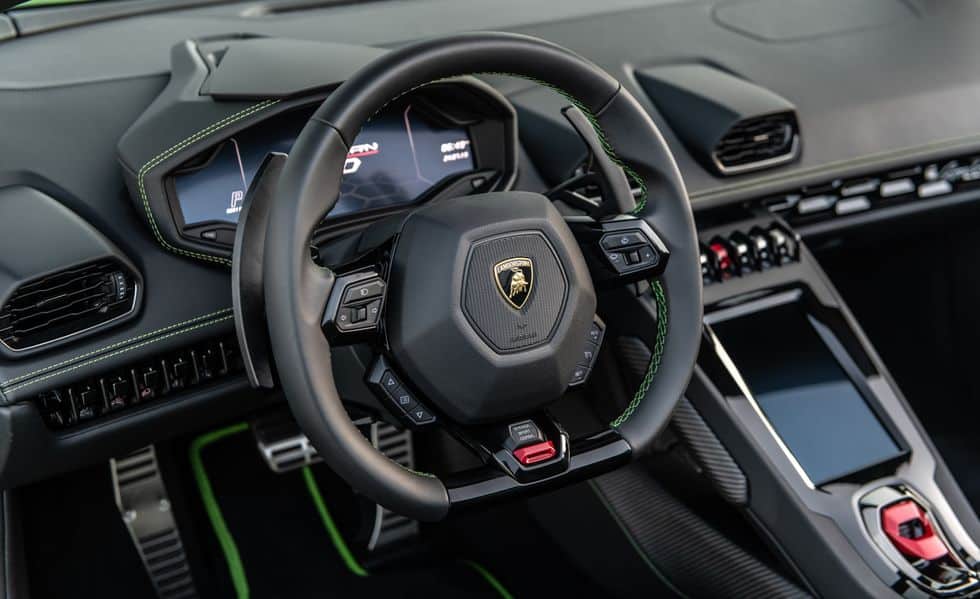



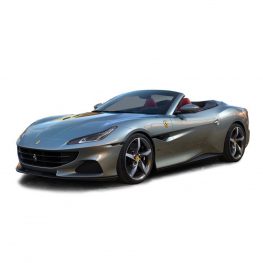
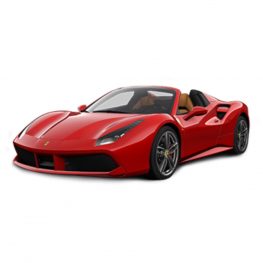
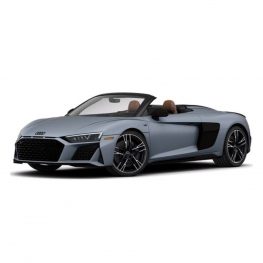

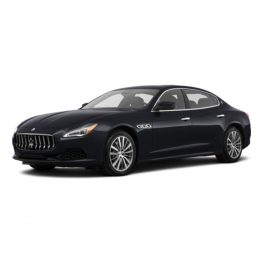
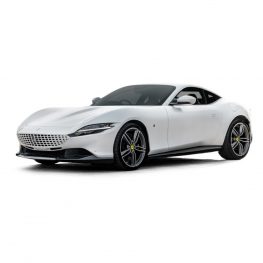


Reviews
There are no reviews yet.